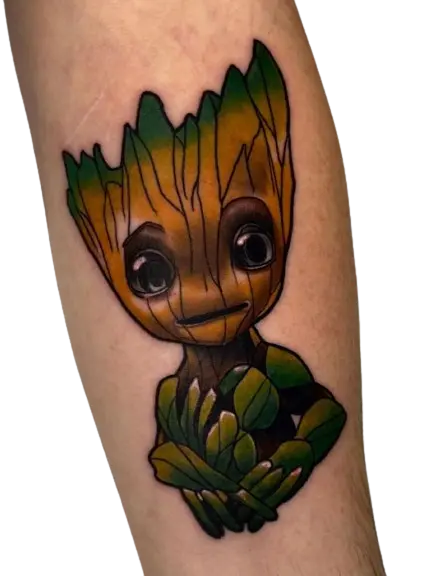
Traditional
Style & Aesthetic:
Bold Outlines: American traditional tattoos are known for their thick, bold black outlines.
Limited Color Palette: The color palette is usually limited to a few basic colors like red, yellow, green, and blue, often with minimal shading.
Simplified Designs: The designs are generally simple, iconic, and easy to recognize. Common themes include anchors, eagles, daggers, roses, skulls, and pin-up girls.
Symbolism: These tattoos often carry deep, traditional meanings, such as patriotism, love, or strength.
Technique:
Heavy Saturation: Colors are heavily saturated, with little to no gradation or shading.
Minimal Detail: The focus is on simplicity and clarity, which means minimal details and a straightforward, bold look.
Historical Context:
Origins: This style originated in the early 20th century and was popularized by sailors, soldiers, and
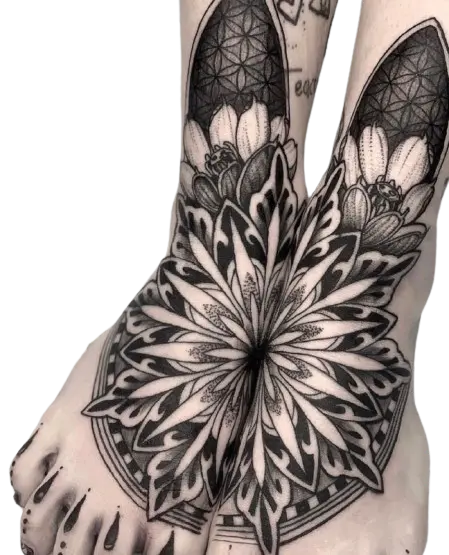
Blackwork
A style of body art that primarily employs solid black ink to create bold, striking designs. This style can encompass a wide range of artistic expressions, from intricate geometric patterns and tribal designs to abstract art and illustrative scenes. The key characteristic of blackwork tattoos is the use of black ink without any other colors, which can result in high contrast and visually impactful tattoos.
Some common techniques and styles within blackwork tattoos include:
Geometric Patterns: Using shapes like triangles, circles, and lines to create complex, often symmetrical designs.
Tribal Designs: Inspired by traditional tattooing practices of indigenous cultures, featuring bold lines and symbolic patterns.
Dotwork: Creating images and shading using small dots of black ink.
Negative Space: Using the natural skin tone as part of the design to create contrast and depth.
Illustrative: Depicting scenes or objects in a detailed, often heavily shaded manner.
Coverup: Perfect for covering up older tattoos
Blackwork tattoos are appreciated for their durability and the way they age over time, often maintaining their boldness and clarity longer than colored tattoos.
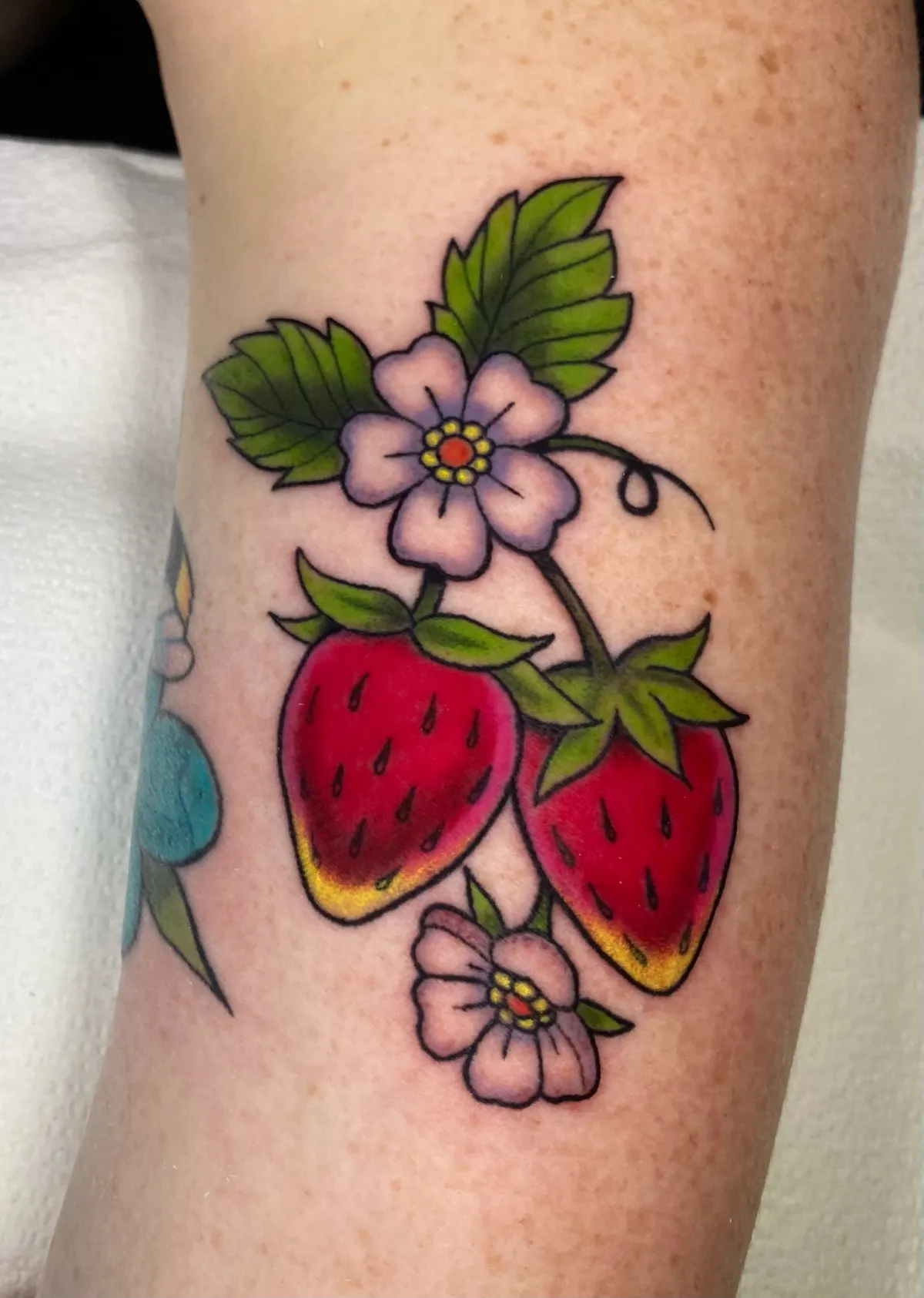
Neo-traditional
A modern evolution of the traditional (or "old school") tattoo style, which originated in the early 20th century. Neo-traditional tattoos maintain some of the key elements of traditional tattoos, such as bold outlines and vibrant colors, but they incorporate more intricate details, a broader color palette, and often more complex shading techniques.
Key characteristics of neo-traditional tattoos include:
Bold Outlines: Similar to traditional tattoos, neo-traditional tattoos use strong, prominent outlines to define shapes and figures.
Vibrant Colors: They often feature a wide range of vivid colors, though the palette can be broader and more varied than in traditional tattoos.
Detailed Shading: Neo-traditional tattoos tend to have more detailed and nuanced shading, adding depth and dimension to the design.
Complex Designs: The subject matter can be more intricate and elaborate, often incorporating elements of realism and fine detail that traditional tattoos typically do not.
Themes and Motifs: Common themes include portraits, animals, flowers, and mythological or fantasy elements, often rendered in a stylized, illustrative manner.
Overall, neo-traditional tattoos blend the classic aesthetic of traditional tattoos with modern artistic techniques, allowing for greater creativity and personalization in tattoo design.

Japanese
Also known as Irezumi, are a traditional form of body art that has been practiced in Japan for centuries. This style is renowned for its distinctive aesthetics, rich symbolism, and deep cultural significance. Here are some key characteristics and elements of Japanese style tattoos:
1. Bold Outlines and Rich Colors: Japanese tattoos typically feature strong, dark outlines and a vibrant color palette, including reds, blues, greens, and blacks, which help the designs stand out.
2. Large, Flowing Designs: The tattoos often cover large areas of the body, such as the back, arms, and legs, and are designed to fit the body's natural curves and contours. Full-body suits or large sleeves are common.
3. Traditional Motifs and Symbols: Japanese tattoos frequently incorporate traditional motifs such as dragons, koi fish, cherry blossoms, samurai, geishas, tigers, phoenixes, and mythological creatures. Each of these elements carries specific meanings and symbolism.
4. Background Elements: Common background elements include waves, wind bars, clouds, and lightning, which help to integrate the main motifs into a cohesive overall design.
5. Cultural and Historical Significance: Many of the themes and symbols in Japanese tattoos are rooted in Japanese mythology, folklore, and history. For example, koi fish symbolize perseverance and strength, while dragons are often associated with wisdom and protection.
6. Use of Negative Space: Japanese tattoos often use negative space effectively, allowing parts of the skin to show through to create contrast and depth within the design.
7. Storytelling: These tattoos often tell a story or convey a narrative, with each element contributing to the overall theme and message of the piece.
8. Tattoo Techniques: Traditional Japanese tattooing methods, such as Tebori (hand-poked tattooing), are still practiced by some artists, though modern machine techniques are also commonly used.
Japanese style tattoos are a blend of artistic craftsmanship and cultural heritage, resulting in visually striking and meaningful body art.
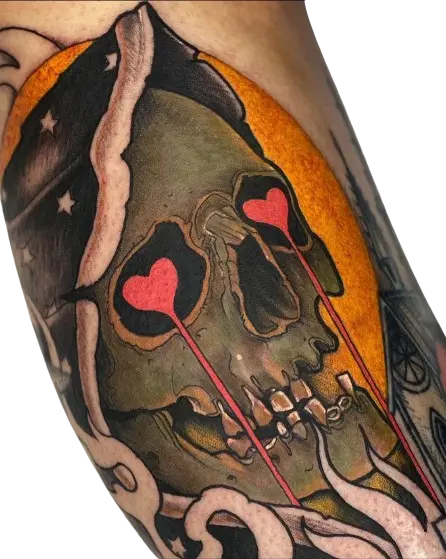
Cover-ups
A type of tattoo designed to conceal or obscure an existing tattoo that someone no longer wants to be visible.
The new design is carefully planned and executed to effectively hide the old tattoo, often incorporating elements that blend well with or completely overshadow the previous ink.
Cover-up tattoos can vary in complexity, depending on factors such as the size, color, and placement of the original tattoo.
Skilled tattoo artists use techniques such as layering, shading, and color matching to ensure the old tattoo is no longer discernible.
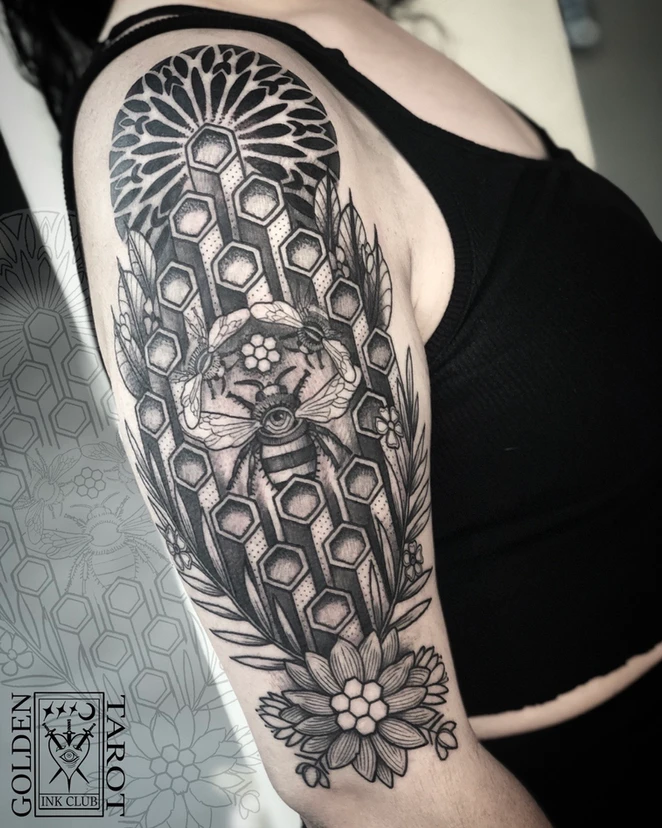
Illustrative
A style of tattoo art that focuses on detailed, intricate designs that often depict realistic or stylized images. These tattoos typically feature elaborate shading, fine lines, and intricate patterns to create a visually striking and detailed image on the skin. Illustrative tattoos can vary widely in subject matter, ranging from nature scenes and animals to portraits, fantasy themes, and more abstract designs. The goal of illustrative tattoos is to create a visually captivating and artistic representation of the chosen subject matter, often with a focus on aesthetics and creativity.
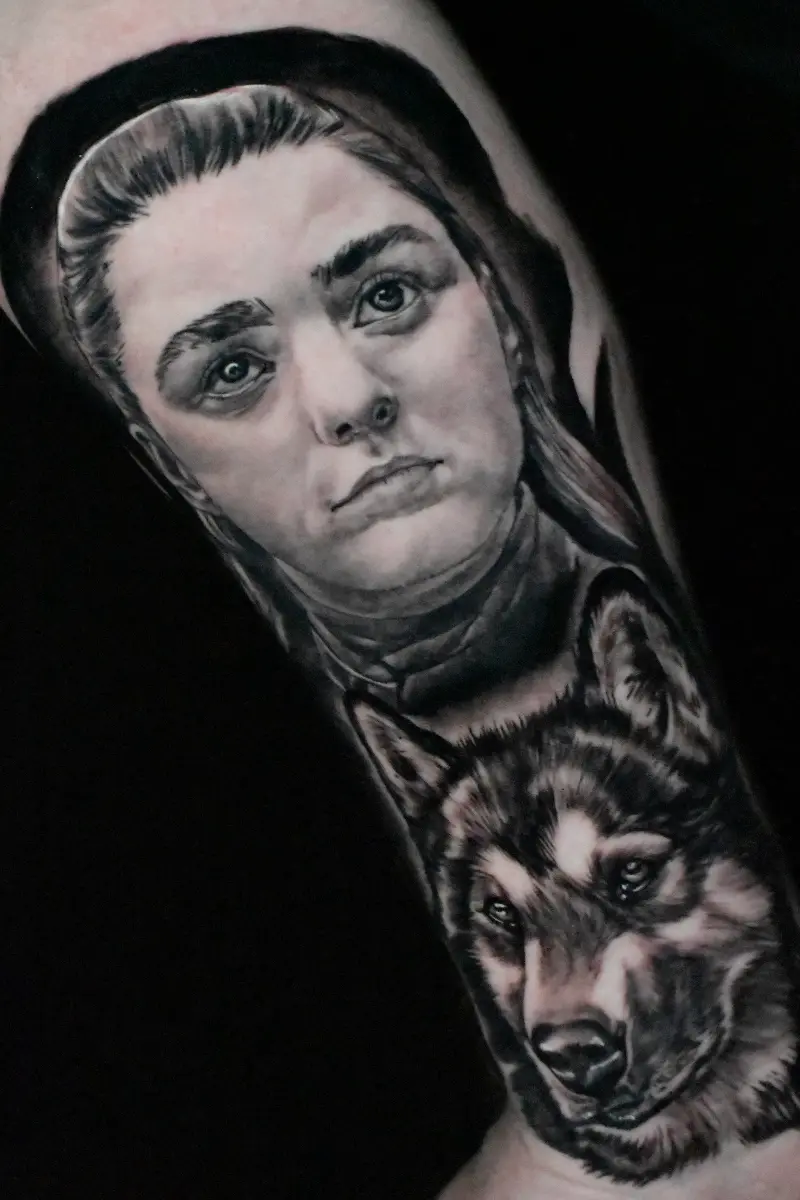
Realism
Also known as photorealism or hyperrealism tattoos, are a style of tattoo art that aims to replicate the appearance of a photograph or a real-life object as closely as possible on the skin. Artists who specialize in realism tattoos use shading, perspective, and intricate details to create designs that look three-dimensional and lifelike.
Realism tattoos often feature portraits of people, animals, landscapes, and objects rendered with a high level of accuracy and attention to detail. These tattoos require a skilled artist with a good understanding of light, shadow, and texture to create the illusion of depth and realism on the skin.
This style of tattooing has gained popularity in recent years due to advancements in tattooing techniques and equipment, allowing artists to achieve incredibly realistic results. Realism tattoos can be striking and impactful, capturing the essence of the subject matter with remarkable precision.
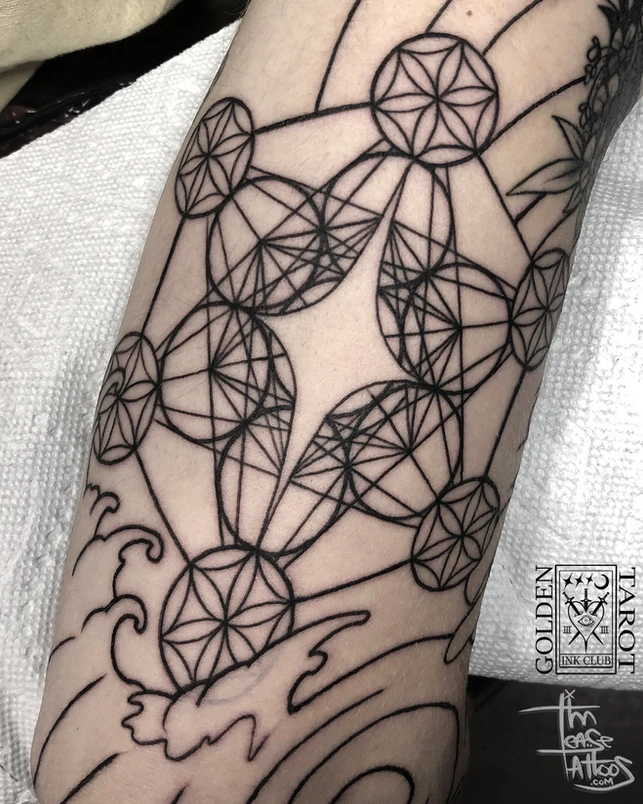
Geometric
A style of tattoo art that involves using geometric shapes, patterns, and designs as the main elements of the tattoo. These tattoos often feature precise lines, intricate patterns, and symmetrical shapes such as triangles, circles, squares, and polygons. Geometric tattoos can be minimalist or highly detailed, and they are usually created with a focus on precision and symmetry. This style of tattooing has become popular for its modern and abstract aesthetic appeal.
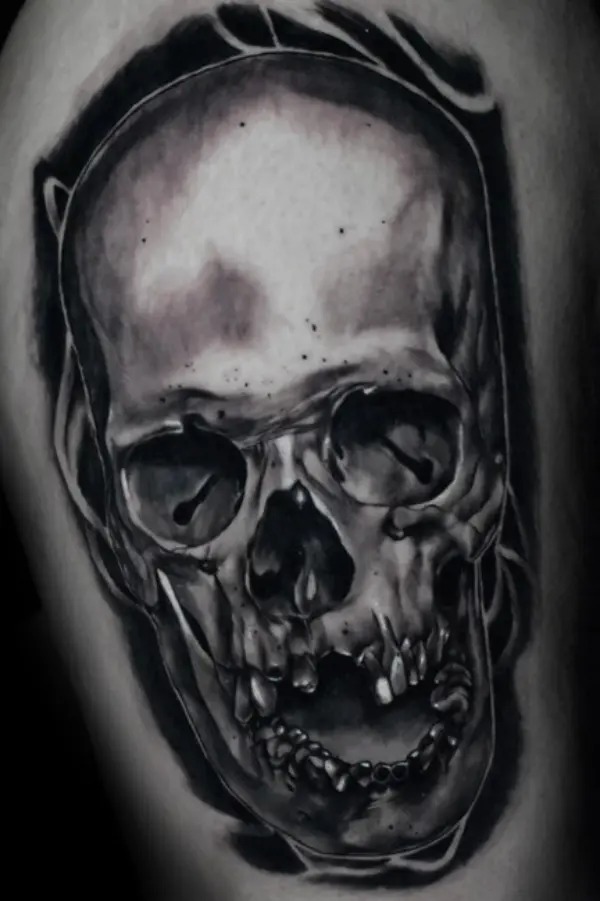
Black and Grey
- are a style of tattooing that uses only black ink in varying shades to create designs, as opposed to color tattoos. The shades of black are achieved by diluting the black ink with water to create lighter tones or using solid black for darker areas.
Grey wash is created by diluting black ink with water to create different shades of grey, which can be used to add depth, shading, and dimension to the tattoo design. This technique is often used in portrait tattoos and realistic designs to create a sense of realism and three-dimensionality.
Black and grey tattoos can be very detailed and intricate, and they often have a more subtle and realistic look compared to color tattoos. These tattoos can be a popular choice for those who prefer a more understated and timeless aesthetic.
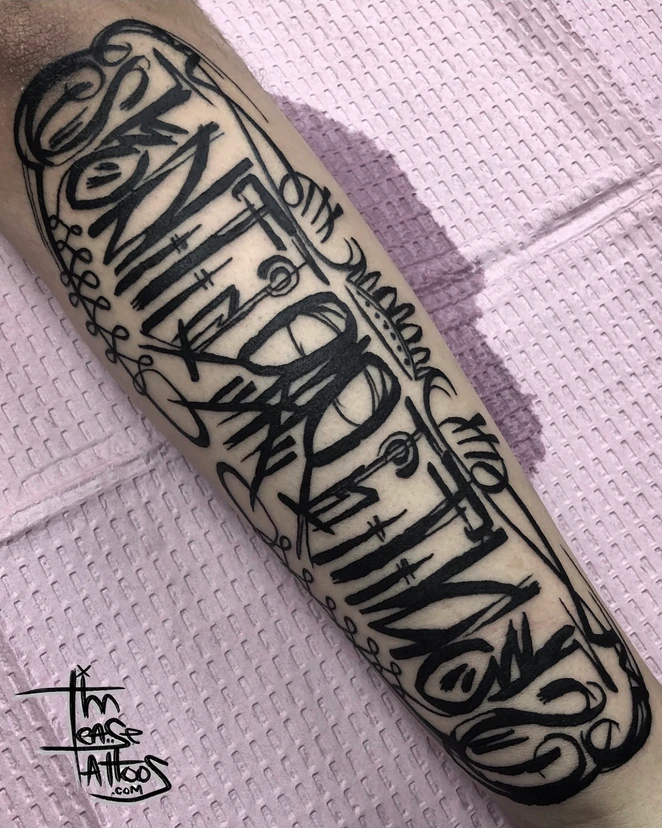
Lettering
Tattoos that consist primarily or entirely of letters, words, phrases, or numbers. These tattoos focus on the aesthetics of the typography and calligraphy used to create the design. Lettering tattoos can be simple and minimalistic, or they can be elaborate and ornate, depending on the style and preferences of the person getting the tattoo. People often choose lettering tattoos to express a meaningful message, commemorate a loved one, or simply to showcase a particular font or style that they find visually appealing.
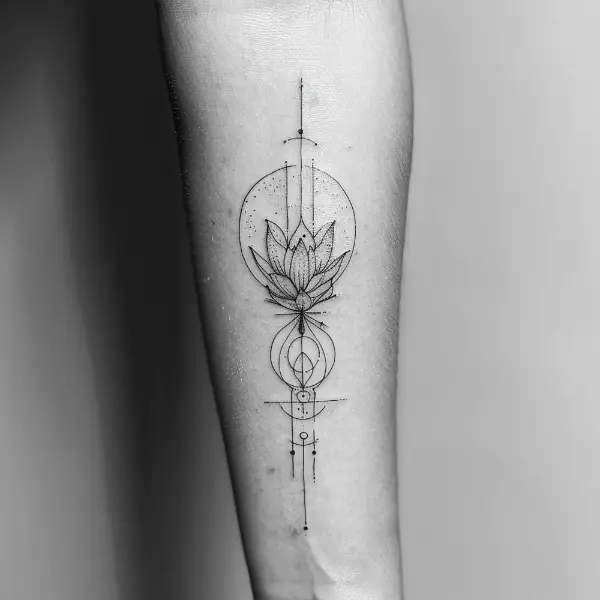
Fine-line
Fine line tattoo style is characterized by its delicate, precise lines and minimalistic approach. Unlike traditional tattoos that often use bold, thick lines and vibrant colors, fine line tattoos focus on intricate detail and subtlety. Here are some key features:
Thin Lines: The hallmark of fine line tattoos is the use of ultra-thin needles to create very fine, clean lines. This results in a soft, elegant look.
Minimalism: Often, these tattoos feature simple designs, such as small symbols, geometric shapes, or delicate florals. The focus is on minimalism, with less emphasis on shading and more on the outline itself.
Detail-Oriented: Despite their simplicity, fine line tattoos can be highly detailed. Artists can create intricate patterns, portraits, or complex designs with fine lines, showcasing a high level of craftsmanship.
Black and Gray Palette: While some fine line tattoos incorporate color, they are most commonly done in black or gray ink, which enhances the subtlety and sophistication of the design.
Small to Medium Size: Fine line tattoos are often smaller in size, making them a popular choice for discreet, personal tattoos that can be easily hidden or shown depending on the wearer’s preference.
Versatility: This style works well for a variety of subjects, including nature-themed designs, text, abstract shapes, and even portraits, making it versatile and appealing to a wide audience.
Fine line tattoos are favored for their elegance and the way they blend seamlessly with the skin, creating a soft, understated aesthetic.